You must have come across the term sheet metals in various instances. But do you know about their different types and uses?
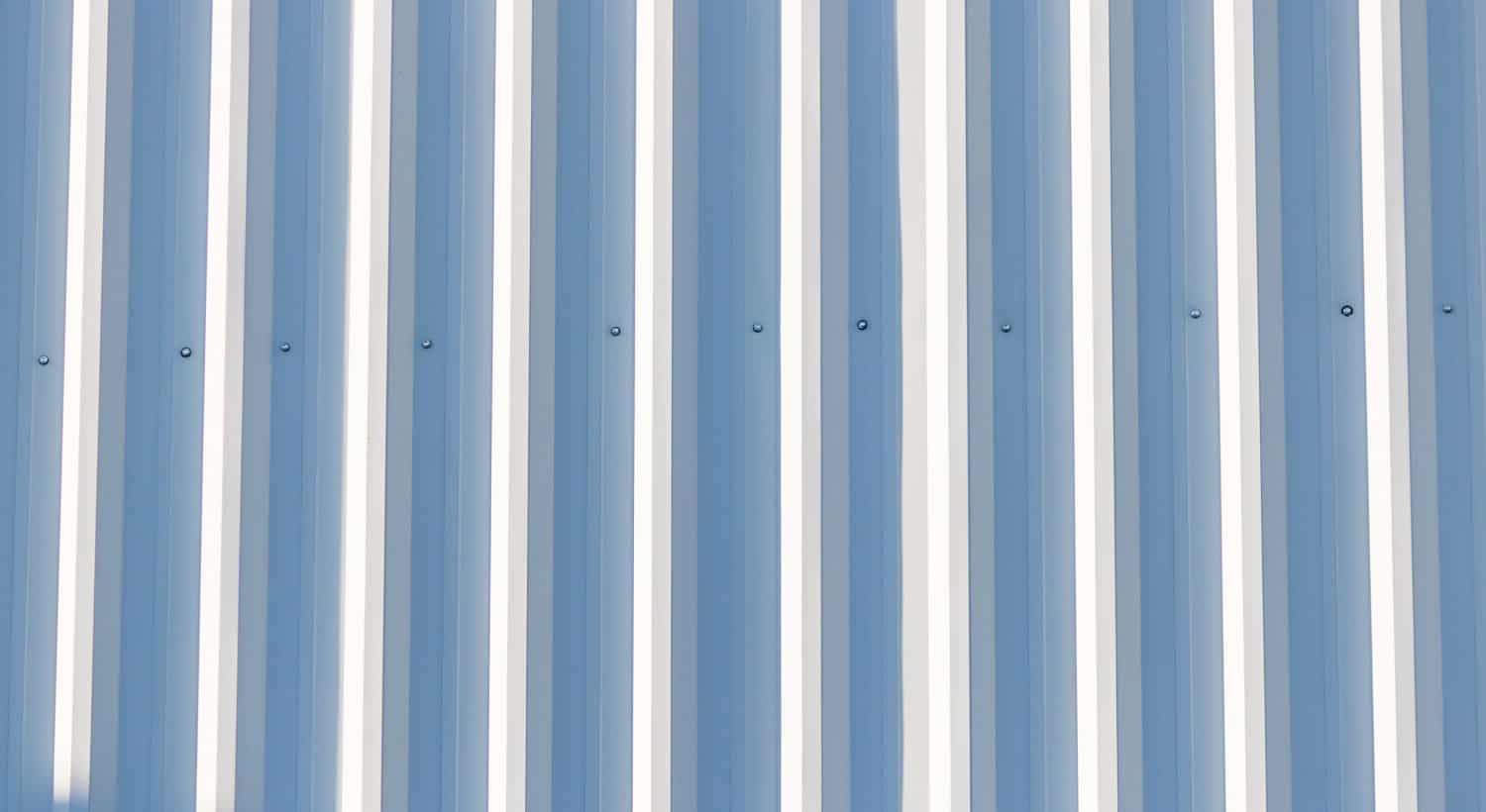
Widely used in commercial, industrial, residential, and commercial applications, these flat and compressed forms of metals offer diversity in terms of functions and use. That being said, each sheet is prepared carefully using different types of metals and manufacturing processes to stand out from the others.
Remember the chapters on metals and alloys? Well, it’s time to go back to the basics of chemistry, folks!
With various metal alloys and manufacturing processes like galvanizing and electroplating determining the types of metal sheets, each can be differentiated accordingly. On that note, it’s time to get into the depth of the 9 types of sheet metals and their diverse uses.
So, without further ado, let’s dive in.
Basics of Sheet Metals
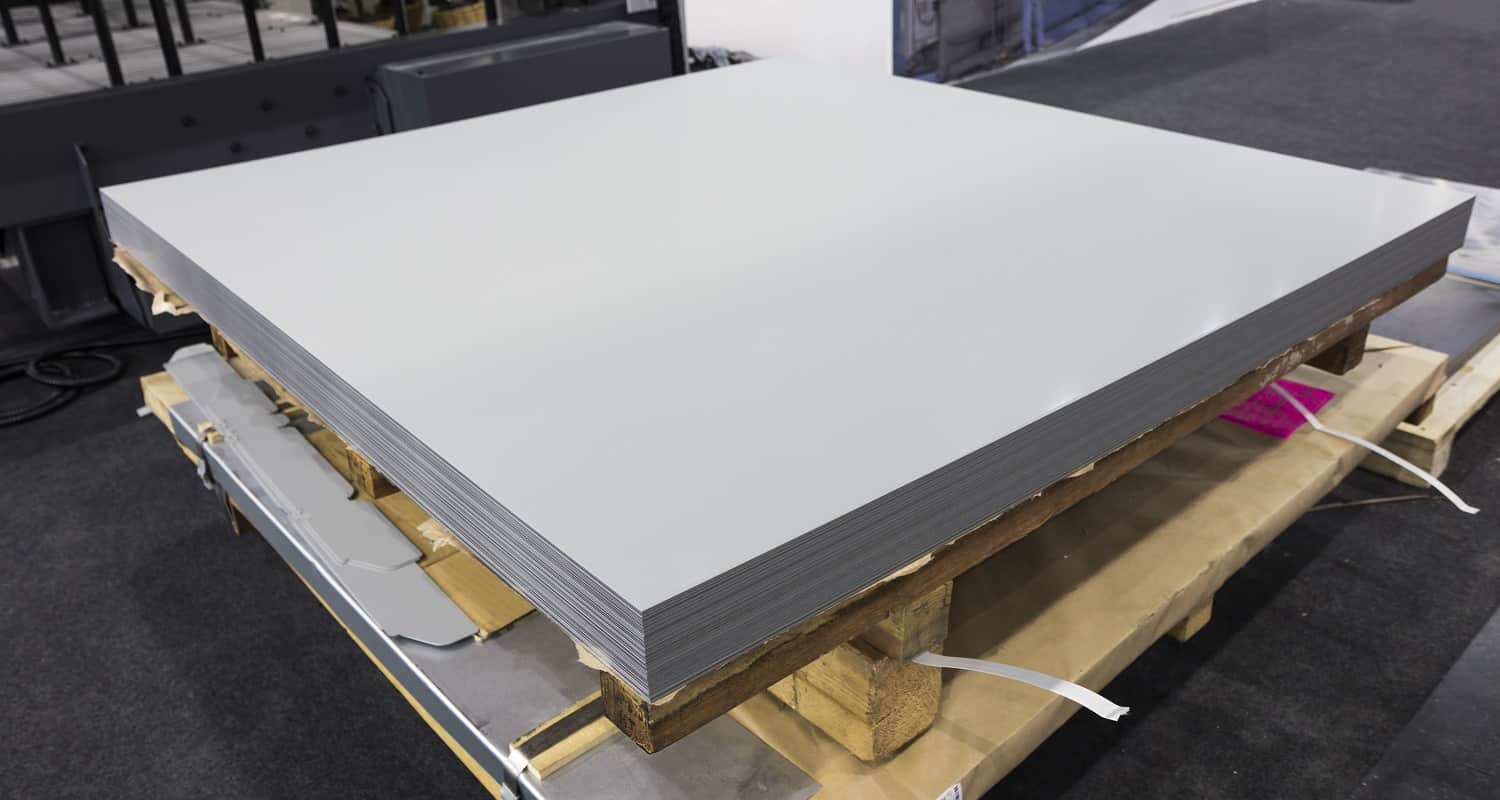
Before going into the details of its types and uses, we would like to take a few minutes of your time, in order to provide you with the basics of this topic.
So, what is sheet metal? Well, to define the term in a simple way, it is basically a kind of metal, which undergoes a manufacturing process for compression into flat sheets. By way of operations involving riveting, cutting, shearing, punching, and folding, they are processed through cold metals.
Mostly, each sheet comes with exceptional quality and a thickness below 6 mm, offering versatility in a wide range of applications. Hence, it serves as an essential tool or equipment for every metal worker.
By now, we hope you are pretty clear about the whole concept. That being said, you can now take a run-through of our list and recommendations.
Types of Sheet Metals and Uses
Stainless steel is the most common metal used in the making of metal sheets, especially because of its high resistance to atmospheric moisture. In other words, it ensures durability, even after being exposed to acid, rain, salt, and other similar elements, bringing it to the number one position on our list!
In fact, it doesn’t end there! With a composition of less than 13% chromium and additional components, including Nickel and Molybdenum, you can expect these sheets to offer high strength and quality.
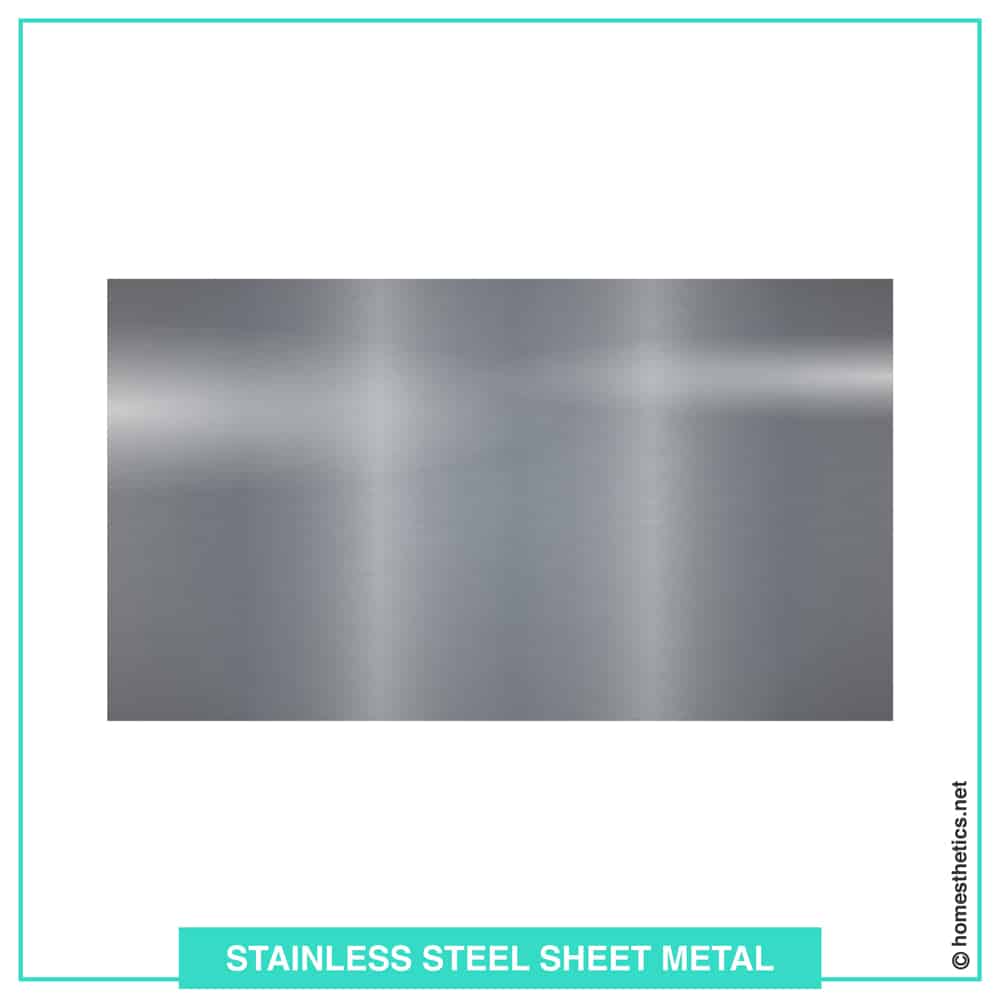
That being said, based on metallic combinations, stainless steel sheets are also classified into three different types. Have a look at the list below:
- Ferritic steel sheets
- Austenitic steel sheets
- Martensitic steel sheets
Uses of stainless steel sheets
Being extremely durable and strong, stainless steel sheets help in shielding, manufacturing, and other purposes. Let us now go through the ways in which these sheets can be used:
- In offering protection against corrosion and natural decays
- Used in machines that process chemicals and liquids
- Ideal for machines undergoing rigorous pounding
- Ensures durability and stiffness
Take a look at this recommended stainless steel sheet available on Amazon:
Broan Backsplash Range Hood Wall Shield
Being highly electrically conductive with no composition of additional metals, copper sheets are popular and mostly used as conductors. Apart from this, it can be easily fabricated while its high resistance against fatigue and corrosion makes it strong and durable.
That being said, you can expect these sheets to be useful for commercial and industrial purposes. Not only this, but it also finds its use in making ornaments and jewelry that are significantly popular in modern fashion.
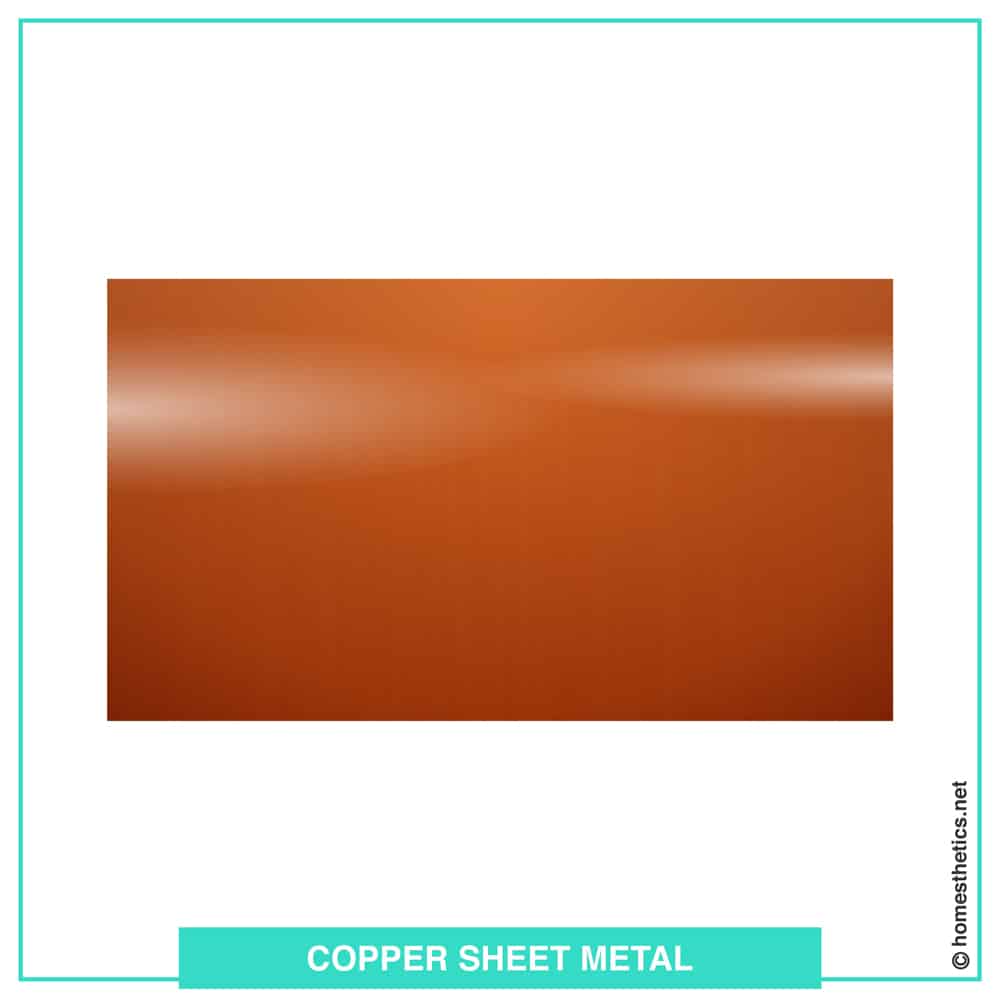
Uses of Copper Sheet Metals
The use of copper sheets is not only restricted to electrical wiring and other electronic parts. It’s now time to go through some of the uses of this conductive and pure type of sheet. Have a look at the points given below:
- Can be used in making modern fashion jewelry and ornaments
- Being highly conductive, it can be used in electronics and electrical parts
- Widely used in architecture and structural engineering
- Helps in interior designing and decorative art
Take a look at this recommended copper sheet metal available on Amazon:
Before knowing about brass sheets, it is important to know the basic composition of brass. So, for most of you who don’t know, brass is an alloy manufactured primarily using copper and zinc.
Like the previous two types of metals, brass is also highly corrosion-resistant with high durability and tensile strength. For this reason, you will notice that it is highly used for industrial purposes. In fact, despite being strong, you will be surprised to know that it is lightweight compared to other alloys. A pretty rare combination, right?
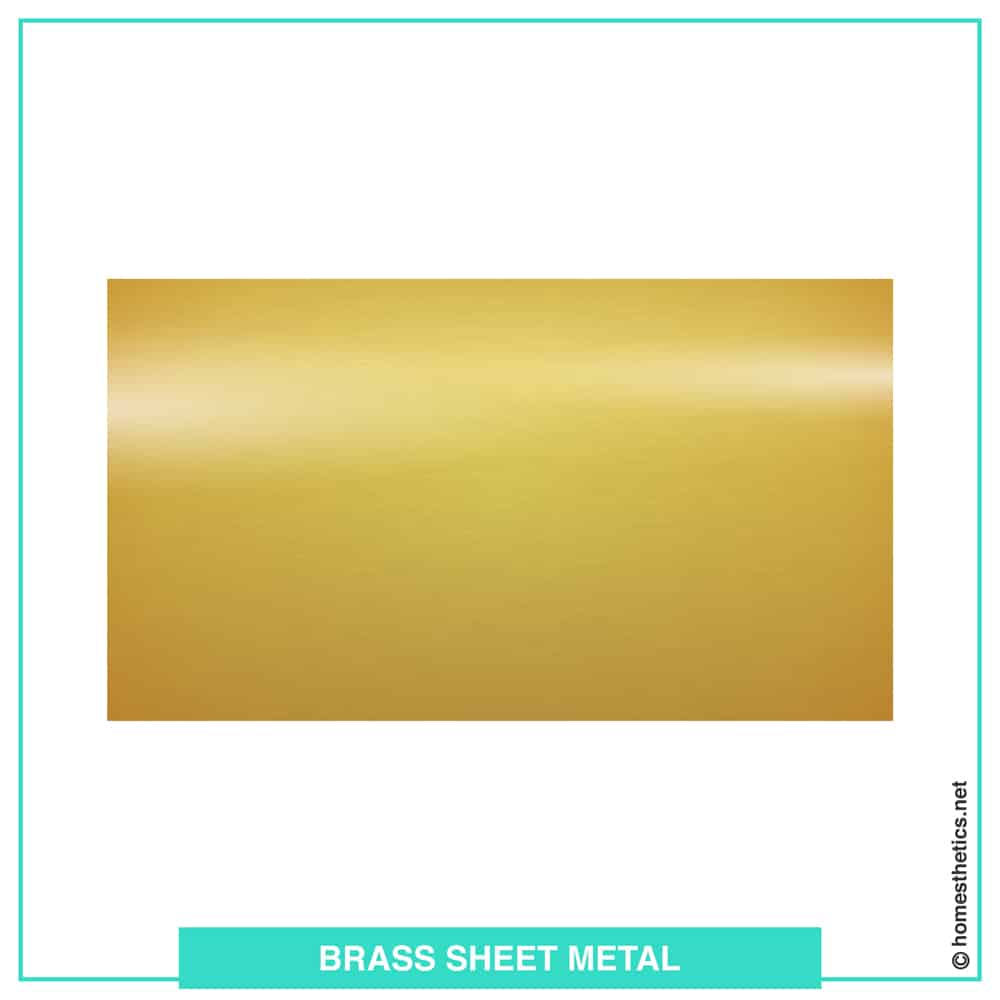
Furthermore, depending on the amount of copper and zinc used during the manufacturing process, five types of industrial-grade brass sheets can be obtained. So, let us take a quick run-through:
- Red brass sheet
- Naval brass sheet
- 330 brass sheet
- Cartridge brass sheet
- Free machining brass sheet
Uses of Brass Sheets
Thanks to its corrosion resistance and high tensile strength, brass sheets are highly used for commercial, industrial, and residential purposes. Here are some of the vital ways in which you can utilize brass sheets:
- In case you need a lightweight, yet durable sheet for operation
- For decorative purposes, including both indoor and outdoor decoration
- Can be used in machines, which require sheets to be cut in different shapes and sizes
- Take a look at a recommended brass sheet available on Amazon:
Coming to another type of sheet, this one is also made using a popular metal, namely aluminum. That being said, aluminum sheets are quite delicate and soft compared to the other types mentioned on the list.
For this reason, it is not classified as recognized industrial-grade sheet metal. In fact, manufacturers often have to add metals like iron, copper, and silicon to its composition in order to enhance strength.
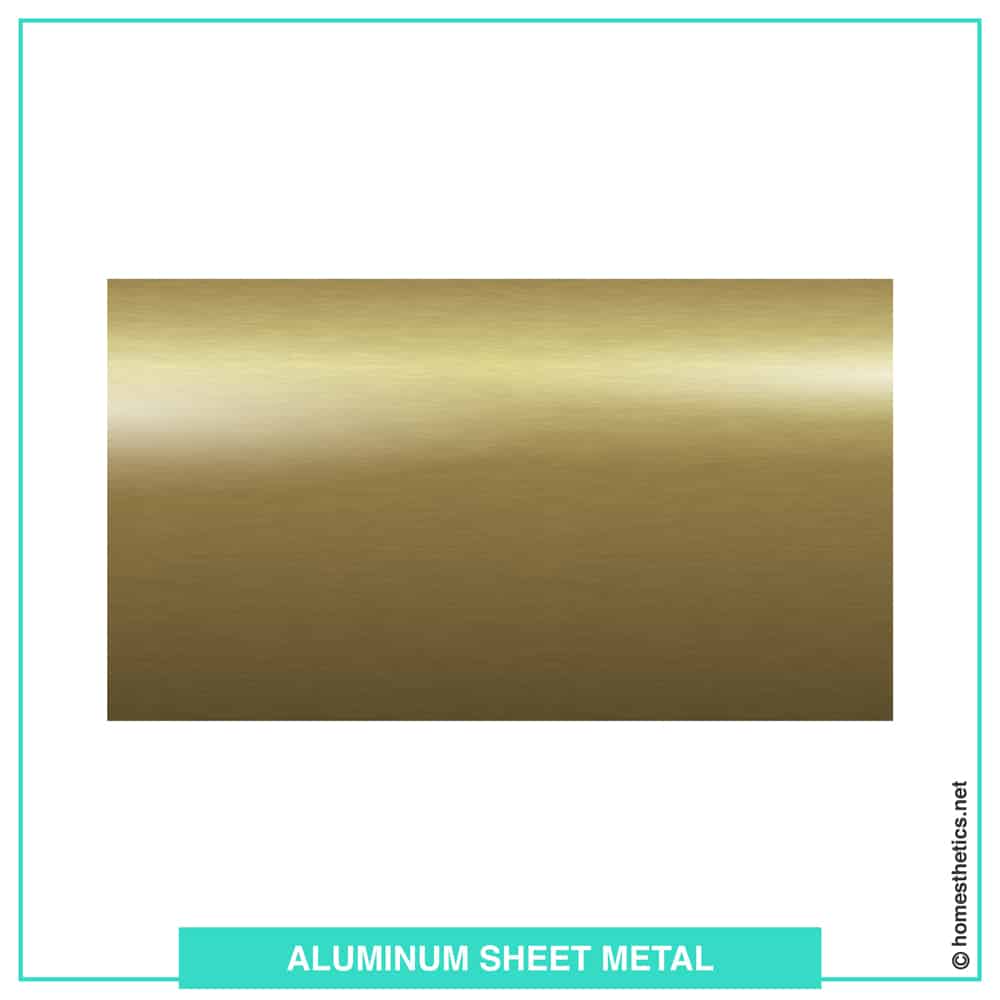
Uses of Aluminum Sheets
Let’s talk about the uses of an aluminum sheet. We already mentioned that it is not recognized much for industrial applications. So, how is it used? Well, take a look:
- Mostly used in the manufacture of fan blades, electronics, and household appliances
- Help in making jewelry and ornaments
- Used in household coverings and roofing
- In parts used to service corrosive liquids like salt water
Take a look at this recommended aluminum sheet available on Amazon:
Being highly durable and robust with high tensile strength, corrugated metal sheets are widely used for residential and commercial purposes. From roofing to siding jobs, this sheet should ideally be your number one choice.
Coming to their manufacturing process, corrugated sheets are prepared through the cold-form process. What happens during this process? Well, firstly, the sheets are pressed flat and then taken for roll forming to achieve the required shape and pattern. After this, the sheets are cut into the appropriate length.
When you see a corrugated sheet, you may notice a wavy pattern. In fact, this is a characteristic feature of the sheet, which helps in its easy identification. That being said, there are also a few other patterns that you may come across.
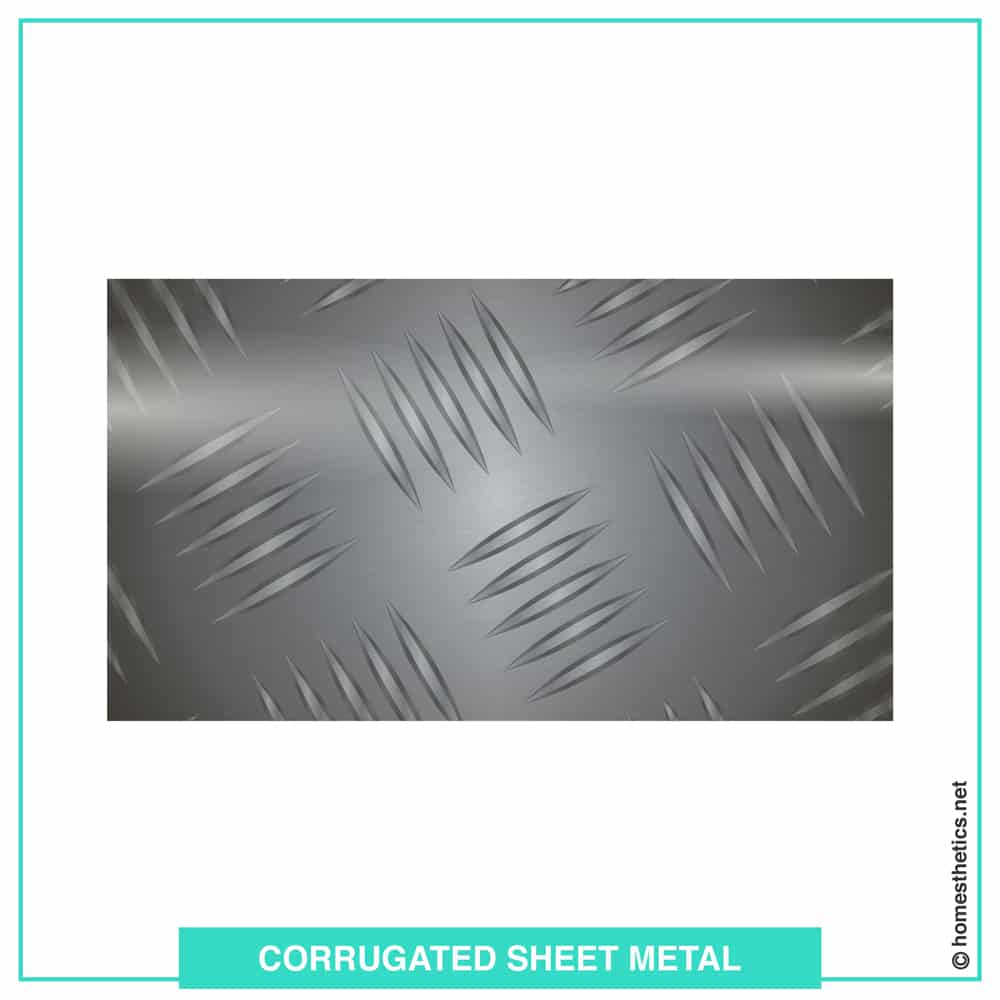
Uses of Corrugated Sheets
Let’s now talk about the uses of corrugated metal sheets. Take a look at the points below:
- Used for residential purposes where minimum maintenance is required
- For resistance and protection against dents, buckles, and warp
- Roofing for general protection against wind, rain, hail, etc.
Take a look at this recommended corrugated metal sheet available on Amazon:
A-Street Prints Silver Corrugated Sheet
Ideally, made using steel, galvanized steel sheets are equally important compared to other types mentioned on the list. That being said, depending on the process used for galvanization, there are two kinds of sheets, namely hot-dipped metallic coated and electro-galvanized sheets.
Need more details on both these types? Read on.
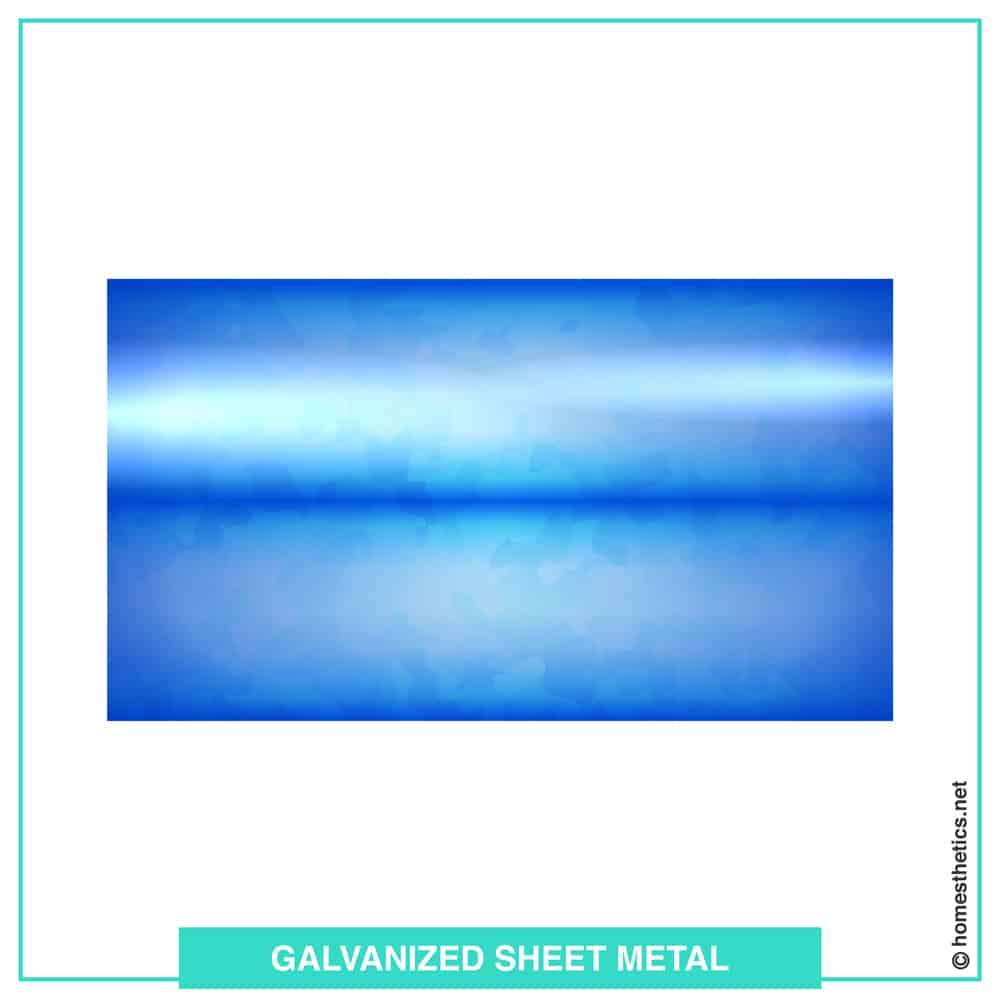
Hot Dipped Metallic Coated Sheet
Pre-treated through a hot-dipped process, these sheets are also referred to as cold-rolled hard steel plates. Furthermore, they are coated well with good-quality zinc for strength and durability. In fact, anti-fingerprint coatings are applied as well.
Electro-Galvanized Sheets
The base metal used in the preparation of this kind of sheet is cold-rolled annealed steel. But how is it made? As the name suggests, the base steel metal is electroplated with a pure and thick layer of zinc. However, instead of being dipped, the metal absorbs the zinc coating.
Coming to the cost, electro-galvanized sheets are more expensive compared to hot-dipped metallic coated sheets. Furthermore, they are mostly used in mechanical applications.
Uses of Galvanized Sheets
Another popular type of metal sheet with diverse applications. Given below are some of the uses of galvanized sheets, take a look:
- Provides heat resistance and durability to metallic pipes
- Helps in the manufacture of nuts, bolts, and nails
- Used in constructing canopies, handrails, fences, ladders, furniture, and more
- Used for insulation purposes
- In making pipes for plumbing work
Take a look at this recommended galvanized sheet from Amazon:
M-D Building Products Galvanized Steel Sheet
Another type of steel sheet, is manufactured by deforming steel into sheets. So, how is it done? In this process, a metal alloy, in this case, steel, is placed between two rollers to produce a fibrous sheet.
After this is done, it is washed off using acidic materials before compiling it into the final roll. Last but not least, to ensure strength and better finishing, the sheet is treated with heat.
Uses of Cold Rolled Steel Sheets
Despite being a non-recognized industrial-grade metal sheet, its improved strength and finishing make it widely used for projects requiring precision. Let us now take a look at some of its uses:
- Ideally used in the manufacture of metal furniture and home appliances
- Construction of garages, industrial buildings, steel sheds
- Commonly used in making school lockers and metal filing cabinets
Take a look at this recommended cold rolled steel sheet available on Amazon:
Steelworks Boltmaster Steel Sheet
Other than the difference in temperature, the process involved in the manufacture of hot-rolled steel sheets is quite similar to its cold-rolled counterpart. That being said, in this case, steel is pressed down into a flat sheet between two rolls at a temperature of more than 1400 degrees Fahrenheit.
The high temperature helps in increasing the thickness of the sheets. For this reason, hot-rolled steel sheets have a thickness ranging between 1/6 to 5/6 inches, making it useful in tackling delicate functions.
Furthermore, unlike cold-rolled steel sheets, which offer a great finishing, hot-rolled sheets come with a lackluster finishing. Yes, the term is used to describe dull and boring, but truth be told, these sheets serve as one of the most interesting types, in terms of appearance.
Uses of Hot Rolled Steel Sheets
We now come to the use of hot roll steel sheets. Please take a look at the points mentioned below:
- Its unique finishing makes it widely used in the creation of art sculptures
- Formability and strength of the sheet help in the manufacture of agricultural equipment
- Used in truck and automobile frames
Take a look at a recommended hot rolled steel sheet available on Amazon:
Shapiro Supply Hot Rolled Steel Sheet
By now, you must have realized that steel plays a major role in the manufacturing of metal sheets. And yes! You guessed it right, yet again, we bring you another variation of steel sheets.
Mild steel sheet is the last type of metal sheet on our list, which can also be considered as a sub-type of cold-rolled steel sheets. The only point of difference between the two is that the steel alloy used in the preparation of mild steel sheets contains comparatively less carbon. That being said, it is neither too ductile nor brittle, and it is also easy to manufacture.
Uses of Mild Steel Sheet
Last but not least, we now come to the ways in which mild steel sheets can be used. Being highly versatile and cost-effective, these steel sheets fulfill its purpose in various applications. Let’s now look into the uses of this type of steel sheet:
- In manufacturing automobile and machinery parts
- Helps in welding work
- Used in pipes for transporting water and natural gas
- Construction of building steel frames
- In making cookware, cutlery, etc.
Take a look at a recommended mild steel sheet available on Amazon:
The most common types of sheet metals include steel, aluminum, stainless steel, copper, and brass. Each type has its own unique properties and is suitable for different applications. Some advantages of using sheet metal include its high strength-to-weight ratio, durability, formability, and recyclability. It can be easily cut, bent, and shaped into various forms to meet specific design requirements. Sheet metal thickness is measured in gauge, with a lower gauge indicating a thicker sheet. Common sheet metal thicknesses range from 30 gauge (0.012 inches) to 7 gauge (0.1875 inches) or even thicker, depending on the specific material and application. Sheet metal can be measured using a gauge tool or a caliper to determine its thickness. It can be cut using various methods, including shearing, laser cutting, plasma cutting, or waterjet cutting, depending on the desired precision and material. Sheet metal is widely used in various applications such as roofing, construction, automotive, HVAC (heating, ventilation, and air conditioning), aerospace, electronics, and manufacturing of appliances, furniture, and enclosures. To protect sheet metal from rusting, it can be coated with a layer of protective finish such as paint, powder coating, or galvanizing. Stainless steel is naturally resistant to rust, while aluminum forms a thin oxide layer that protects it from corrosion. Yes, sheet metal is highly recyclable. It can be melted down and reused to produce new sheet metal or other metal products. Recycling sheet metal helps conserve resources and reduce waste. The thickness and type of sheet metal required for a project depend on factors such as the application, structural requirements, desired aesthetics, and budget. It is recommended to consult with a professional or refer to engineering guidelines to determine the appropriate sheet metal specifications for your specific project.Sheet Metals FAQ's
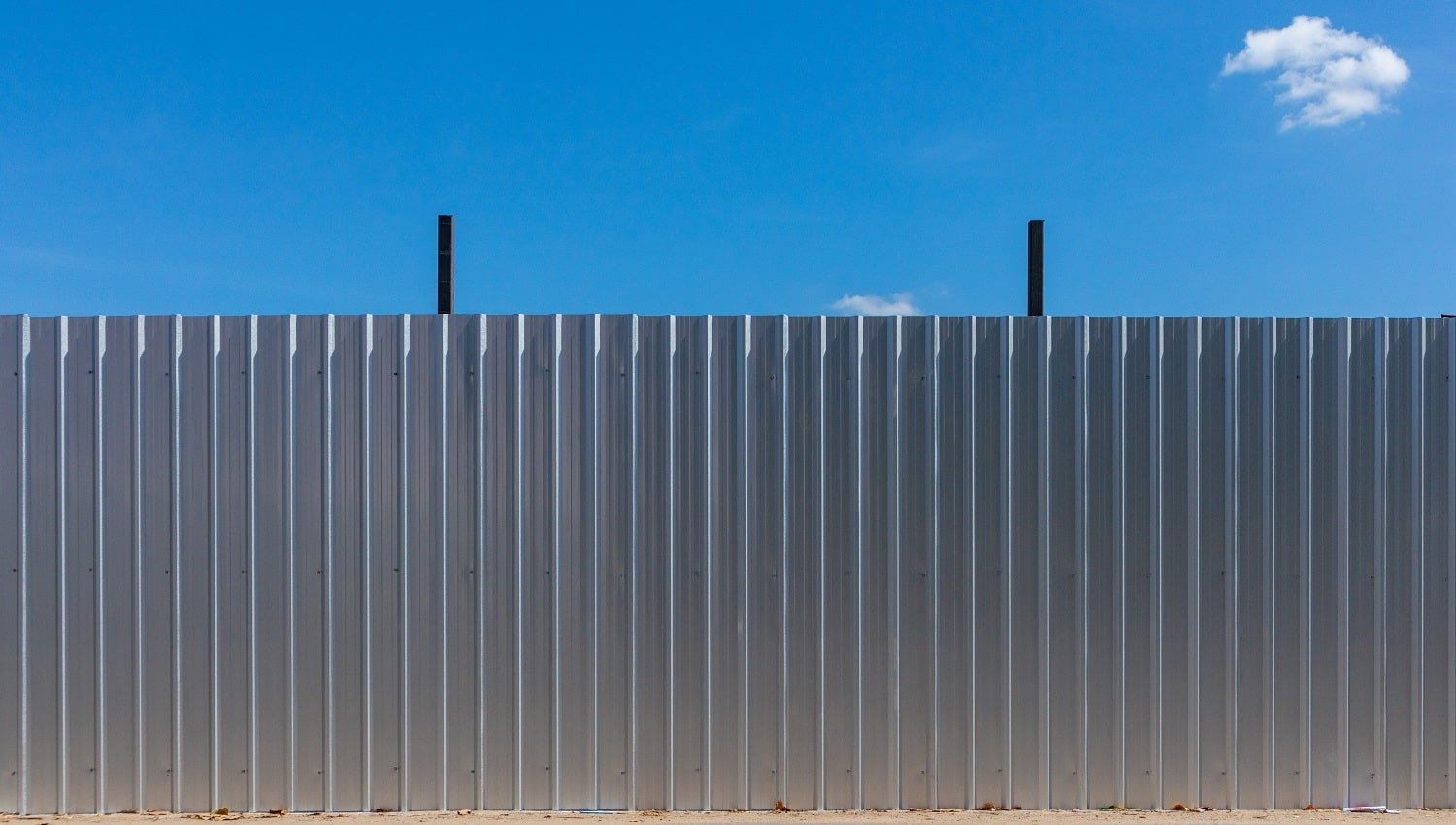
Conclusion
As you already know, sheet metals find their use in a variety of industrial, commercial, and residential applications, including construction and manufacturing. However, their functions depend on the composition and processing technology. In other words, it is critical to gain sufficient insight regarding the different kinds of sheets.
In fact, to help create a better understanding, we have also mentioned a recommended option for each type. You will notice that the most commonly used metal in the preparation of these sheets is steel because of its strength and durability. On the other hand, aluminum sheets are softer and more delicate compared to the rest.
On that note, we now come to the end of our informative guide on the 9 different types of sheet metals and their uses. And we hope this article was able to boost your knowledge on this topic.
Till next time!
Related Articles
